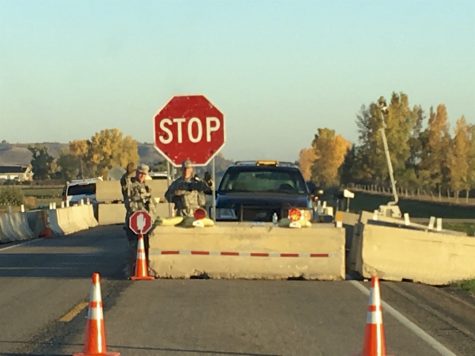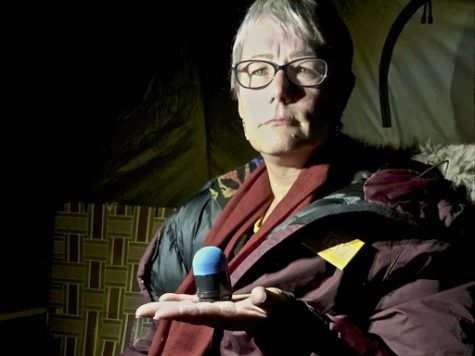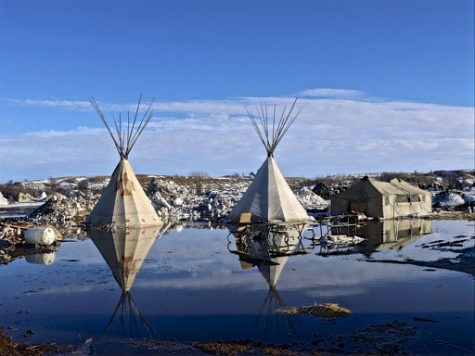They Didn’t Want the Truth To Get Out
In August of 2016, 55-year-old Jeff Iron Cloud packed his bags and left his construction job and his apartment in Denver, Colorado to drive nine and a half hours to North Dakota. He left after working at that job for eight months. He left with no expectations for what the next part of his life would bring.
He left to join the Standing Rock Native American Sioux tribe in their camp to protect their water.
For the next seven months, Iron Cloud spent his time keeping warm, praying with others in the camp, and protesting the establishment of the Dakota Access Pipeline, or DAPL, that would run directly through the southern point, Native American land. There were concerns that if the pipeline were to leak, crude oil would devastate both indigenous water sources, and culturally important land.
This story is nothing new to many Americans. If anything, it could be considered old news. But many horrors, such as the brutality of law enforcement, lack of press coverage, and use of intimidation tactics that occurred not only during the Standing Rock protests but throughout history are consistently overlooked. During these protests, centuries of genocide, broken promises, and robbery of the most basic human rights came together to create Sacred Stone Camp, where American and indigenous people alike shared great triumph and great loss.
Iron Cloud was at Standing Rock from August 2016 to February 2017. His neighbor whilst at living at camp was named Terri Wilkerson, a woman from Ann Arbor, Michigan.
“The more I saw civil rights abuses mounting, and saw how poorly the North Dakota government was treating people in the area and how poorly the media was getting the word out about what was really happening there,” Wilkerson said, “I just felt resolve to stay because I thought it wasn’t right.”
Although there were several protesters using their phones to film their experiences on the front lines, Iron Cloud noticed a drop in the usage of videography to get the word out.
“In the beginning, people were trying to record it on their phones,” Iron Cloud said, “But they cut that off after a while. They [the law enforcement] wouldn’t allow that information to be recorded. They didn’t want the truth to get out.”

This begs the question, what truth was the law enforcement so determined to keep from being publicized? Wilkerson and Iron Cloud described the violent action taken by law enforcement during the protests, the inhumane way arrests were carried out, and how they used intimidation tactics and got the inside scoop on Sacred Stone camp.
The unarmed protesters would take prayer walks, only to be attacked by dogs, hosed with high-pressure water, or shot at with rubber bullets. This all occurred on what protesters came to know as, “the front line.”

“There was a lot of the elderly also on the front line.,” Iron Cloud said, “They [law enforcement] didn’t care who it was or their age. Every day we came in peace, and we were unarmed but yet they would still have their dogs and their guns and their water cannons, and we were peaceful.”
Wilkerson was aware of some of the arrests of Native Americans that were going on during her time at camp.
“[They were] arresting them [indigenous people] in the middle of winter when it’s minus twenty outside and stripping them down to one single layer of clothing, putting them on unheated buses and putting them in animal cages when they get to where they’re going,” Wilkerson said.
During the night, over 50 stadium lights shone down on camp to both prevent rest, and to intimidate the people in the camp. Aircrafts also interrupted sleep.
“There were planes that were flying low, much lower than the U.S. laws permitted, but they got away with it, so they were meant to intimidate people in the camp because we could not only hear them, we could feel them, just feel the, “puh,puh,puh,puh,puh,puh(etc.),” shaking your tent, the blades whirling around,” Wilkerson said.
Not only did law enforcement use intimidation tactics, brutality, and barbaric arrests to dishearten the protestors, but they planted people of their own in the camp.
“They also sent people into camp to be water protectors,” Wilkerson said, “so they had entrenched themselves inside the camp as well.” An indigenous woman named Red Fawn was arrested. She was accused of firing a gun at the protests, a gun that belonged to her boyfriend. Her boyfriend was an ex FBI agent. Red Fawn could face twenty years in prison.
When asked why the law enforcement fought so hard to keep this information from getting out about what was going on at Standing Rock, Iron Cloud said, “They would get paid pretty good and they want the construction to happen because they were paid more so they would do anything and everything to keep the construction going.”
This said construction was highly controversial not only because of the potential danger to the Standing Rock Reservation’s water source but because of a rerouting that occurred.
“It [the pipeline] was rerouted south of Bismark to the cannonball North Dakota area, because of concerns about it leaking into the water,” Wilkerson said. “But somehow, magically when it crosses the river in the southern point there’s not the same concerns. You know, that’s just ridiculous.”
All this “ridiculousness,” was one year ago. So why should the American people care? The Dakota Access Pipeline has been built. Inhabitants of camp have dispersed. To the untrained eye, this fight may seem over. But this fight was forgotten before it was even finished.
Our government did ridiculous things at Standing Rock. It has done ridiculous things to Native Americans before. And it will continue to do ridiculous things.
“From the beginning,” Iron Cloud said, “they killed so many people. It was a bad relationship. And even today they’re not following their treaties. They’re taking the land, they’re taking the water, and they said they would help us with our health care, our education, but they haven’t. And in a sense, that’s the same thing today.”
This is a fight for the basic human rights of a group of people who were here before us, and it is far from over. If we forget the millions of slaughtered Native Americans, the treaties we broke and continue to break, if we turn a blind eye to the persecution of indigenous people today, what hope do we have of building a better future? Christopher Columbus is dead, but the mistreatment of Native Americans is not.
I cannot ask you to find the bravery of Jeff Iron Cloud as he left his job, his apartment in Denver to help the Sioux, or of Terri Wilkerson, who left her home, her family in Ann Arbor, Michigan to stand up for the rights of Native Americans to clean water, but I can ask this of you: Never forget those who did find that bravery. Never forget Standing Rock.

When she's not working on the Communicator, she can be found practicing jazz, preparing for a Mock Trial competition or helping run feminist club. Some fun facts about Geneve are as follows: she was born with an extra thumb that has since been removed; she loves to sing and dance, even though she is not good at either.










